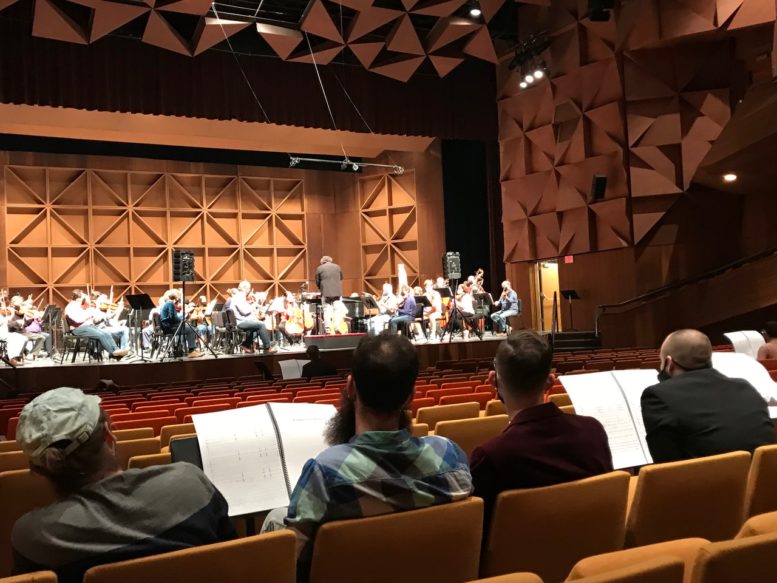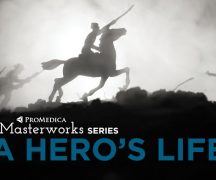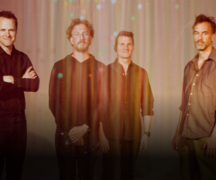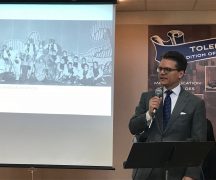By DAVID DUPONT
BG Independent News
For Timothy Parsons, Tuesday afternoon was “a dream come true.”
The graduate student in composition heard the Toledo Symphony Orchestra perform his “Image of the Invisible.”
“I’ve been wanting to hear an orchestra piece I wrote played by a live group since I was 10 or 11 years old,” Parsons said. Now, he said, “I’m getting the full experience.”
He was one of five composers to have his work included in the ninth Toledo Symphony Student Composer Reading Session at BGSU, and the first in a year and a half because of the pandemic.
The other composers were Cory Brodack, Pak Hei Leung, Hayden Stacki, and Connor Gibbs.
“It almost feels normal,” said Christopher Dietz. The event is the brainchild of the BGSU composition professor.
The afternoon, though, had a different tone because for the first time, the orchestra was being conducted at the session by its music director, Alain Trudel.
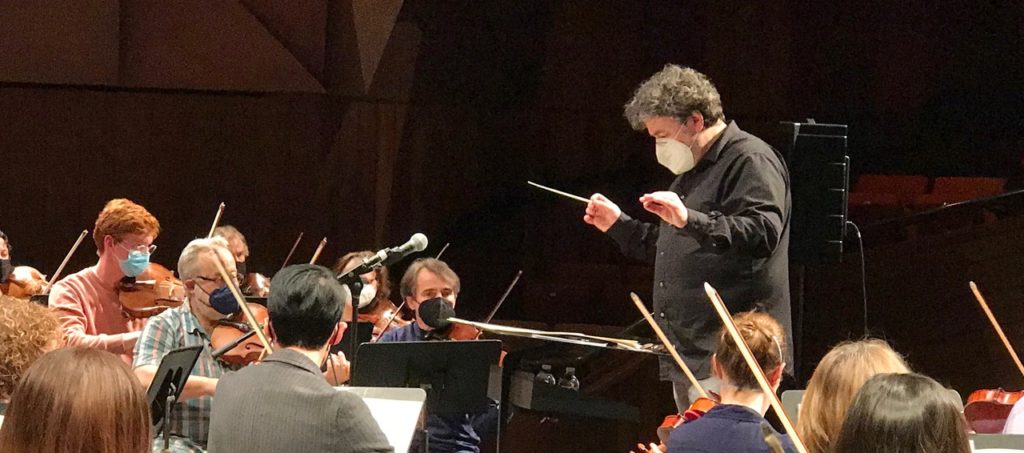
“It’s going great,” Trudel exclaimed to Dietz as the orchestra took a break.
“I’ve been meaning to do this for a long time,” he said in an interview after the session. He first attended the reading session in November 2017, before his term as music director began.
Even though, Trudel was busy – he was heading out to the airport directly from Kobacker Hall, being at BGSU in front of the orchestra was vitally important to him.
He was struck by the creativity of these young composers’ works, and he wants to do “whatever we can do to help them,” he said. “They are the reasons we have orchestras. If there’s no pieces, there’s no reason to have groups, no reason to have musicians. We need music.” The orchestra, he said, feels the same way. “They’ re not shy of any challenge,” the conductor said. “They’re game for it. … They have the same sense as I have that it’s really important to encourage our community of musicians. The composers in the university are just younger. They’re real composers. We’re not doing them a favor. They’re doing music a favor by writing new music.”
Trudel, who also composes, noted that during the sessions, the musicians weren’t commenting on the work. “The composers are young,” he said. “Some things are doable, some things are less doable. But everybody’s trying. Everybody’s going for it.”
Dietz said that the conductor made the same point to the composers the night before at a pre-reading meeting. “He explained to them that this part of your piece will probably work, this part of your piece will be a real challenge. That was very useful to get the conductor’s opinion beforehand.”
Over the years the pieces have gotten more complex. The orchestra, Dietz said, was doing “mighty work to get everything from these complicated pieces in the 25 minutes that each piece will get.”
In the past, the orchestra was led by guest conductors. Those musicians did excellent jobs. Still, Dietz, who has had pieces performed by the Toledo Symphony, said, that having “the boss,” the music director at the helm makes a difference. “They sit up a little more. They play with more verve.”
At previous sessions, the orchestra would play through the piece once, with a few stops, and then the composer would come on stage to ask and answer questions. Then the piece would get a final run through.
Trudel took a different tack. He worked the pieces, repeating sections, trying to nail down the details. “I treat this like this was a Brahms or a Bach. This is all the same for me. We try to give it as much love as we can in the short time. Of course, it’s never enough time, but we try to do our best,”
The aim, Dietz said, is for the composer to come away with a recording of their work. This year, that recording will be “cobbled” together from the various sections.
Having the orchestra run through the piece at the end “may be more satisfying for the audience,” he said, “but ultimately may not give the best outcome for the student because in the long run a recording is what we’re going for.”
He noted that “this event is a workshop, especially today. It’s not really a performance; it’s not really a rehearsal. It’s a workshop.”
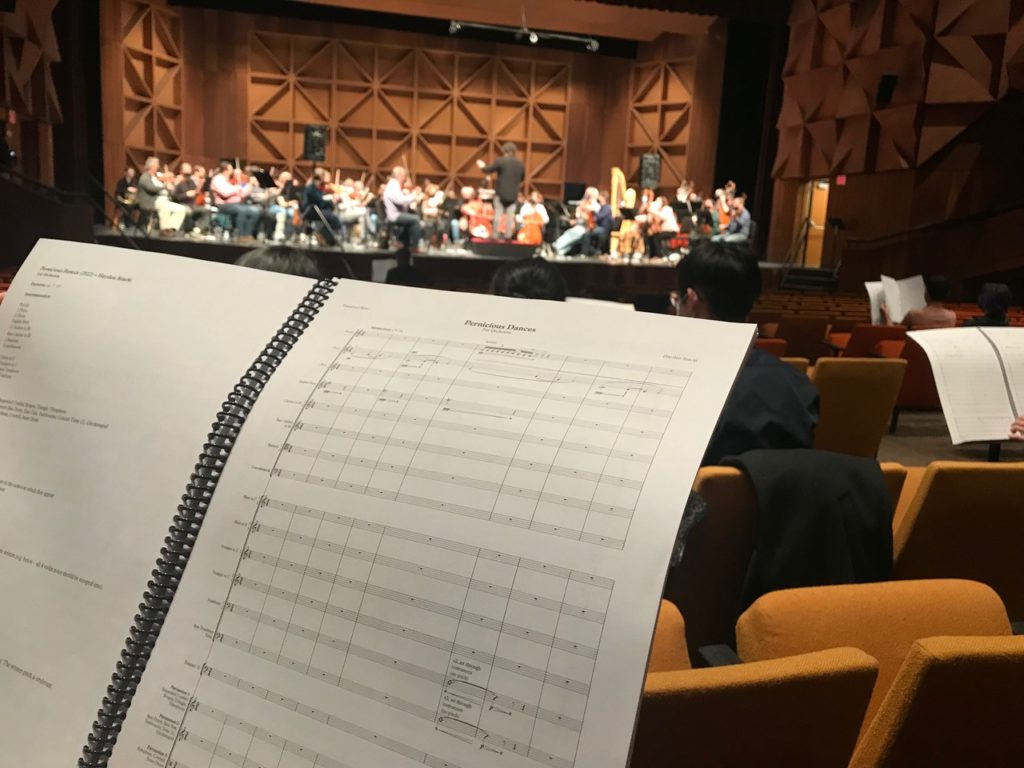
If Dietz is the event’s father, Karol Spencer is the reading sessions’ godmother.
Spencer’s late husband Herb Spencer taught horn for many years at the university, and she has remained devoted to helping music students. For many years she was a leader in Pro Musica. It was about 10 years ago that she saw Dietz in the college of music office.
He had, she recalls, a devastated look in his eyes.
She asked him what was wrong.
He responded: “I am short money for a wonderful experiment.”
She asked: How much do you need?
Then she wrote the check.
The reading session is her favorite event at the College of Musical Arts. “I wouldn’t miss it,” she said. “I love every part of it.”
“I love to see the reaction of students as they listen to a professional orchestra perform their music.” When family can come to watch and listen as the young composer’s work comes “to a professional fruition it is wonderful” for all involved.
Parsons had family and friends, including his first composition teacher with whom he studied at 13, on hand. “It was a huge plus to have him here,” Parsons said.
Spencer’s investment has led to more financial support. A board member of the Toledo Alliance for the Performing Arts has anonymously funded a scholarship for graduate students who are interested in pursuing orchestral composition.
The first three recipients were Parsons, Leung, and Brodack. The scholarship helps fund expenses beyond what can be covered by assistantships and other financial aid, Dietz said.
“To get additional funding takes them over the hump financially and makes it very reasonable to be here.”
In their first year, they work on their orchestral piece and are guaranteed to have it workshopped at the reading session.
“Basically the last two years have been dedicated to this piece,” Parsons said. While he has composed other work, “this has been my main focus.”
The compositions performed reflected a range of inspirations.
In his program note, Brodack wrote: “At its essence, Fuse, Charge, Break emulates the sound of a single firework, gradually morphing into an explosive firework show.” The result is “an explosive showpiece for orchestra.”
Gibbs wrote: “Imminent Horizon is inspired by a simplified model of a black hole. This work moves quickly and intensely toward the singularity at its center, where all matter is destroyed. …Following the motion around the black hole, motives from other worlds collide and interact, creating a musical chaos not unlike outer space itself.”
Stacki wrote: “Pernicious Dances tells a story that seems innocent at first but quickly reveals a darker side. The introduction presents an ominous, yet calm atmosphere. As the piece progresses, the piece’s true colors show and the tone becomes decidedly more and more evil until the piece’s brutal finale.”
Leung wrote that: “Three Poisons is a Buddhist concept that explains the root of human troubles. The poisons are greed, hatred and delusion, each represented respectively by an animal: chicken, snake and pig.” Each of the movements represents one of those poisons and explores how their relate to each other. “I wrote this piece with great (and, in retrospect, perhaps-way-too-radical) frustration towards the world in 2020. And it is even more frustrating to learn that the world is still (if not even more) troubled as of today.”
Parsons writes: Image of the Invisible was inspired by the passage in Colossians where it says, ‘He is the image of the invisible.’ I wish to explore this mysterious paradox of an ‘Invisible Image’ through the means of the orchestra by painting an initial picture, but not blurring it, and hiding it within the layers, then allowing the picture to slowly return till it is all you can see or hear in the end.”

